Qaitbay Citadel in Alexandria
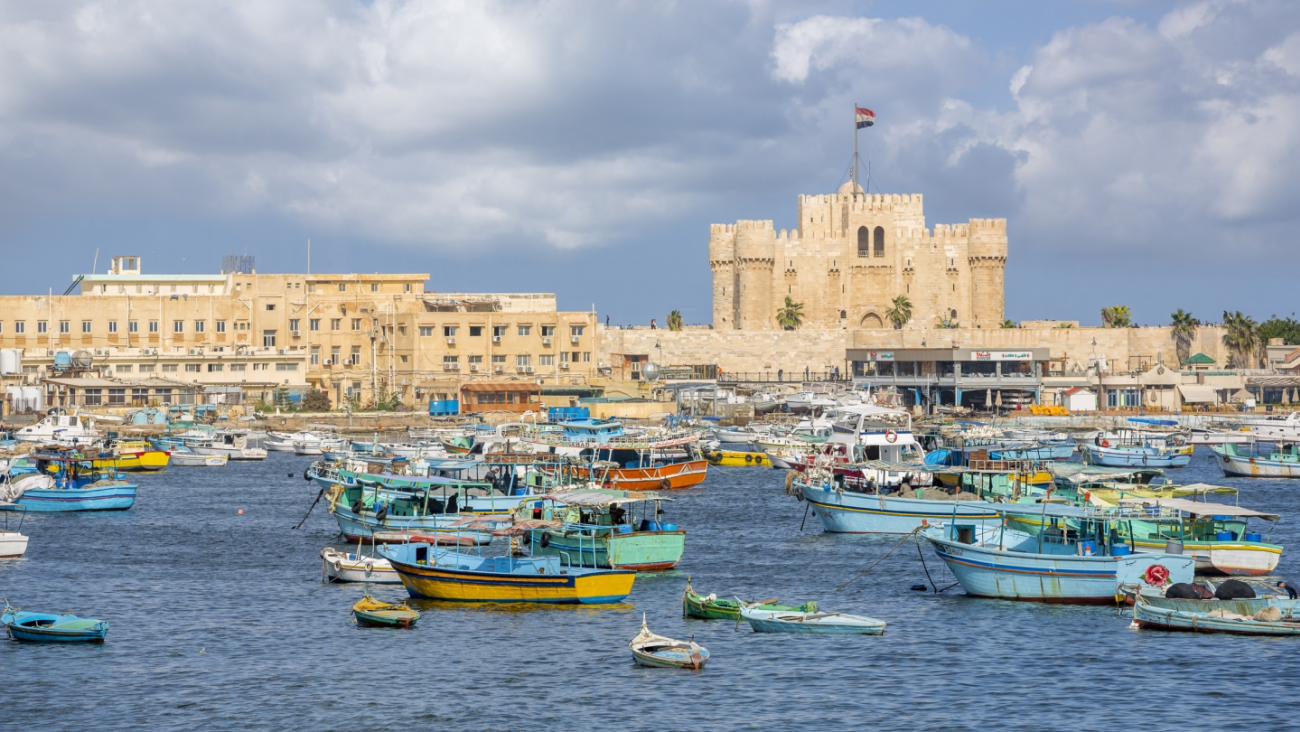
Qaitbay Citadel – Alexandria’s Historic Fortress
The Qaitbay Citadel is one of Alexandria’s most prominent historical landmarks, located on the Mediterranean coast at the entrance of the Eastern Harbor. It was built between 1477 and 1479 by the Mamluk Sultan Al-Ashraf Sayf al-Din Qa'it Bay on the site of the ancient Lighthouse of Alexandria, one of the Seven Wonders of the Ancient World. Strategically positioned on the northern tip of Pharos Island, the fortress played a key defensive role throughout the Mamluk and Ottoman periods. The main tower stands 30 meters high with 17-meter-long sides. The citadel remained a military stronghold until its strategic importance declined following the British bombardment of Alexandria in 1882.
The Origins of Qaitbay Citadel
The Qaitbay Citadel's story weaves deeply into one of history's most legendary structures. This remarkable fortress shows both military brilliance and a link to Egypt's ancient heritage.
Built on the ruins of the Lighthouse of Alexandria
The Qaitbay Citadel now stands where the ancient Lighthouse of Alexandria once guided ships along the Mediterranean coast. Ptolemy II Philadelphus built this lighthouse in the 3rd century BC. It became one of the tallest structures humans had ever built in the ancient world. The lighthouse weathered maritime storms for centuries until earthquakes caused severe damage. Two devastating tremors in 1303 and 1323 AD ended up destroying it completely by 1375 AD. The fallen wonder's limestone blocks found new life as building materials for the citadel.
Sultan Qaitbay's vision and political context
Sultan Al-Ashraf Sayf al-Din Qaitbay, the fortress's namesake and creator, rose to power through extraordinary means. This Circassian Mamluke, born around 1423 AD, came to Egypt as a young man under 20. He became Sultan in 1468 AD after serving in various positions. His citadel project went beyond architectural dreams - it answered the growing threat from Ottoman naval power to Egypt's security. Constantinople's fall in 1453 had rattled the Islamic world, which pushed Qaitbay to protect Alexandria's exposed harbor.
Construction timeline and funding
Sultan Qaitbay visited Alexandria with nobles and royal family members after celebrating Prophet Mohammed's birthday in June 1477 AD. The lighthouse ruins inspired him to order a fortress built right away. Construction started that year (882 AH). Mameluke architect Qagmas Al-Eshaqy designed this massive project, which cost more than 100,000 gold dinars. The impressive structure took just two years to complete, finishing in 1479 AD (884 AH). Qaitbay traveled to Alexandria to open the fortress and supplied it with weapons and soldiers. He set up several waqfs (religious endowments) to pay for both construction and military operations.
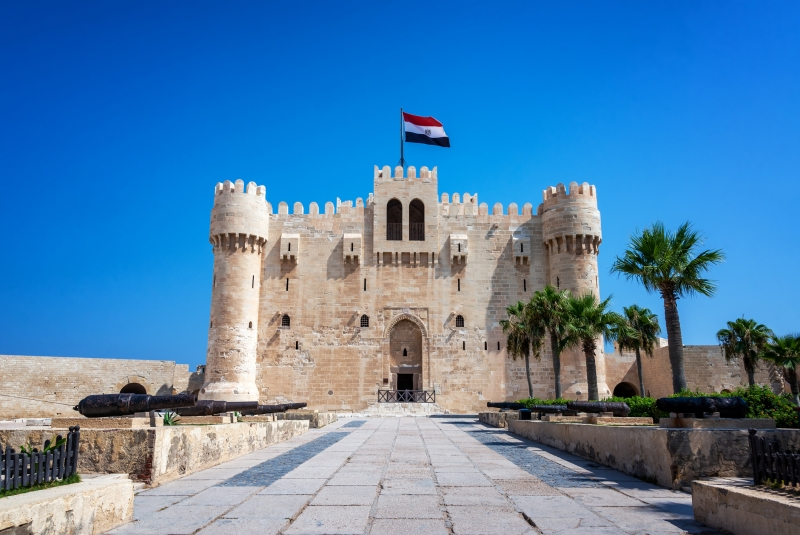
Architectural Design and Features
"The fortress incorporates elements of Islamic, Ottoman, and Mamluk architectural styles, creating a unique and visually striking structure." — Private Tours in Egypt, Egyptian historical and travel resource, summarizing expert consensus
The Qaitbay Citadel stands as a remarkable example of medieval Islamic military architecture. Its design blends defensive capabilities with beautiful esthetic elements.
Main tower and defensive layout
The citadel's heart lies in its principal tower, which stands proudly in the northeastern section of the courtyard. This massive square structure spans 30 meters on each side and reaches 17 meters high. Beautiful circular towers grace each corner to boost both security and visual appeal. The southern wall houses the main entrance with an arched opening that displays Sultan Qaitbay's blazon. The tower spreads across three floors, each serving different purposes. A great hall sits on the third floor, known as the "seat of Sultan Qaitbay," where the ruler watched ships sail into Alexandria's harbor.
Interior mosque and its unique orientation
The mosque stands out as the citadel's most distinctive interior feature and takes up more than half the ground floor. The design differs from typical standalone mosques because it blends into a military structure, making it simple yet practical. Traditional Islamic design shapes the prayer hall with its courtyard surrounded by iwans (vaulted spaces). Beautiful star-shaped marble mosaics adorn the floor, reflecting Islamic artistic traditions. Two marble columns frame the mihrab (prayer niche) in the qibla iwan, letting soldiers pray toward Mecca while they retain control of their defensive position.
Walls, towers, and strategic openings
Double walls protect the citadel through an ingenious defense system. The outer walls stretch 8 meters high and 2 meters wide around the fortress. The northern wall facing the sea proves most important with its roofed passageway split into chambers for cannon storage and deployment. A space of 5-10 meters separates the outer and inner walls. Soldiers used this buffer zone to gather and move safely. Arrow slits and projecting balconies dot the walls for attacking enemies. Battlements crown the structure to provide extra defensive positions.
Use of local materials and Mamluk style
Classic Mamluk architectural elements shine throughout the citadel's limestone construction and defensive features. Builders created a link to history by using stones from the ancient Lighthouse of Alexandria. The fortress combines Islamic architecture with European influences, especially in its decorated portals and military breakthroughs. Islamic motifs appear alongside military symbols like swords and shields in intricate carvings. Half-circular towers and crenellations showcase the prominent Mamluk military architectural style from the 15th century.
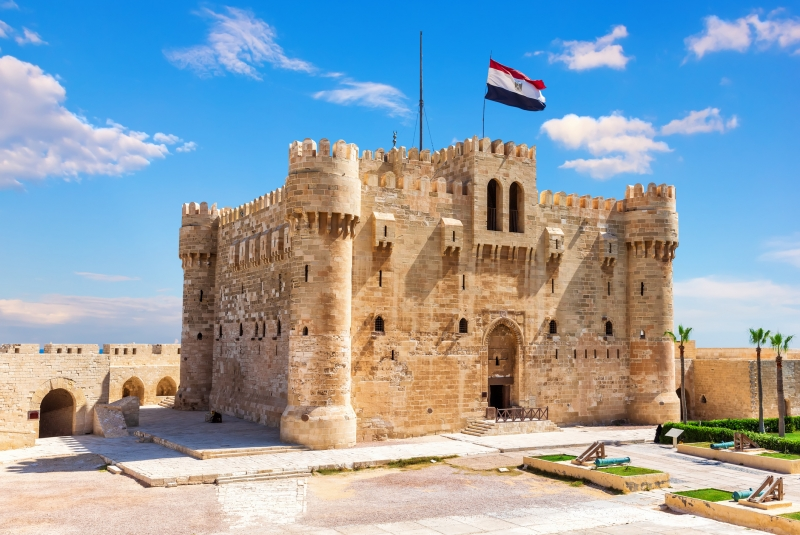
Military Role Through the Centuries
"The Citadel of Qaitbay was a testament to the Mamluk's military prowess and their determination to safeguard the city of Alexandria from external threats." — Egypt Planners, Reputable Egypt travel and history resource, summarizing expert consensus on Egyptian heritage
Qaitbay Citadel played a vital military role that changed with political shifts and new technology over time.
Mamluk era and Ottoman fortification
Sultan Qaitbay tried to reinforce Alexandria against Ottoman threats, but his military preparations fell short. Sultan Qansoh El-Ghoury saw the Ottoman invasion coming and substantially strengthened the citadel's garrison with advanced weapons. The fortress even became a prison for his political rivals. The Ottomans conquered Egypt in 1517 and managed to keep the citadel's military importance. They stationed infantry, artillery, and support staff like drummers, trumpeters, masons, and carpenters there.
French invasion and loss of strategic value
The citadel's defenses grew weaker as Ottoman military power declined. Napoleon's forces took the fortress easily in 1798 because of the garrison's poor condition and France's superior weapons. French soldiers found that there was crusader weapons inside from Louis IX's campaign. The citadel started losing its strategic value after that, though Muhammad Ali Pasha renovated its walls and added modern weapons in the early 19th century.
British bombardment and structural damage
British naval forces attacked Alexandria on July 11, 1882, which devastated the citadel. The attack cracked the fortress's structure badly. Cannon fire destroyed the western facade completely and severely damaged the northern side. The ruins stayed untouched for about 25 years until restoration work began.
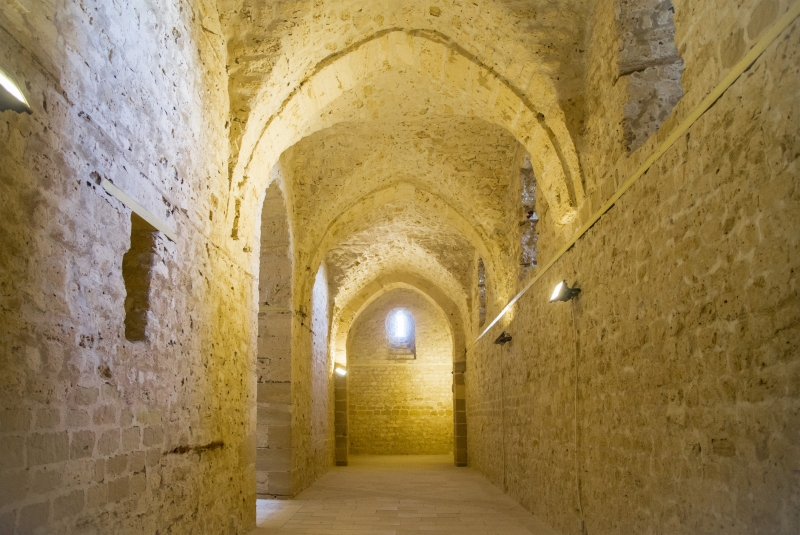
Customize Your Dream Vacation!
Get in touch with our local experts for an unforgettable journey.
Plan Your TripRestoration and Modern Significance
Qaitbay Citadel lay abandoned for over two decades after the British bombardment caused severe damage in 1882. The Ministry of Defense started the first major restoration in 1904. They focused their work on the upper floors. This marked the fortress's transformation from a military installation to a historical monument.
Early 20th-century renovations
King Farouk ordered quick renovations between 1940-1941. He wanted to turn the ancient fortress into a royal rest house. The renovation kept much of the citadel's original character while making interior spaces suitable for modern use. The Committee for the Preservation of Islamic Monuments carried out these renovations. They based their work on studies by French scientists during Egypt's occupation. These early preservation efforts saved the structure from possible collapse after years of neglect.
Conversion into a maritime museum
The citadel's purpose changed fundamentally after Egypt's 1952 revolution. Egyptian Naval troops turned the historic building into a Maritime Museum that year. This change protected the structure while creating educational value for visitors interested in Alexandria's rich naval history.
Tourism and cultural heritage today
Qaitbay Citadel has become one of Alexandria's most valuable historical landmarks. The Egyptian Antiquities Organization started the most ambitious restoration project in 1984. They implemented complete plans to restore the fortress. Conservation operations in 2003 made the historic structure larger and better preserved. The citadel now serves as both a cultural heritage site and popular tourist destination. Visitors can glimpse Alexandria's multicultural past here. Continued preservation efforts are vital to protect this architectural masterpiece from environmental damage.
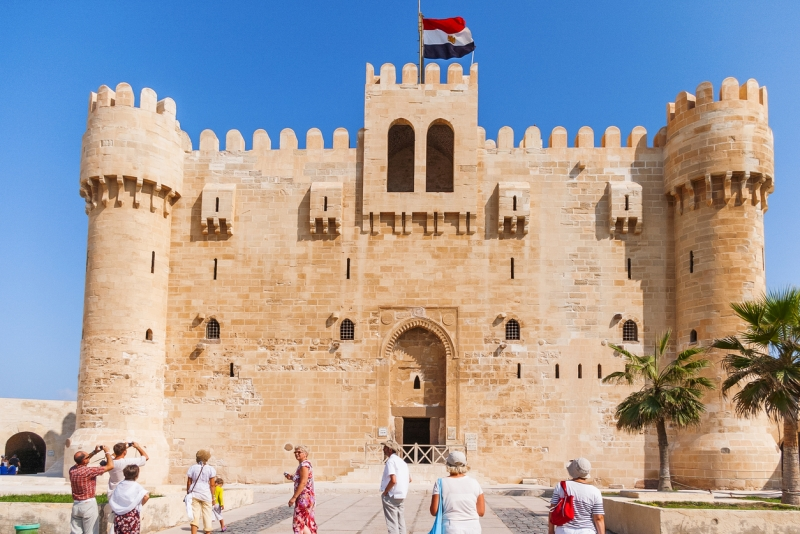
Qaitbay Citadel is unique for its strategic location at the mouth of Alexandria's Eastern Harbour, built directly on the ruins of the legendary Lighthouse of Alexandria. Its architecture is a unique blend of Mamluk, Islamic, and Ottoman styles, creating a fortress that is a testament to Alexandria's maritime history and its layered past.
Qaitbay Citadel was built between 1477 and 1479 AD by the Circassian Mamluk ruler, Sultan Al-Ashraf Sayf al-Din Qa'it Bay. Its rapid construction was a direct response to the increasing naval power of the Ottoman Empire in the region, establishing a strong Egyptian defensive position on the Mediterranean coast.
The citadel features a towering 30-meter high main tower with three circular towers at its corners, providing a commanding view over Alexandria's harbor. Its double walls, arrow slits, and projecting balconies were designed for enhanced defense. The interior houses a mosque with beautiful marble mosaics that reflect Islamic artistic traditions, seamlessly integrated into the fortress's military design.
Originally built as a coastal defensive fortress for the Mamluk Sultanate, the Qaitbay Citadel served various military roles for different rulers of Egypt. After suffering damage during the British bombardment of Alexandria in 1882, it lost its strategic importance. In the 20th century, it was restored and transformed into a Maritime Museum, becoming one of Alexandria's most significant cultural heritage sites and a major tourist destination.
Yes, the Qaitbay Citadel is open to visitors and is one of the most significant historical landmarks in Alexandria. It is a key stop for tourists looking to explore the city's rich naval history and a must-see monument that connects modern-day Alexandria to its ancient and medieval past. Ongoing preservation efforts ensure it remains a protected heritage site for future generations.
The Qaitbay Citadel is located on the Mediterranean Sea coast in Alexandria, Egypt. Specifically, it is situated on the eastern side of the northern tip of Pharos Island, at the mouth of Alexandria's Eastern Harbour. The fortress was built on the exact site of the legendary Lighthouse of Alexandria, which was one of the Seven Wonders of the Ancient World.
























